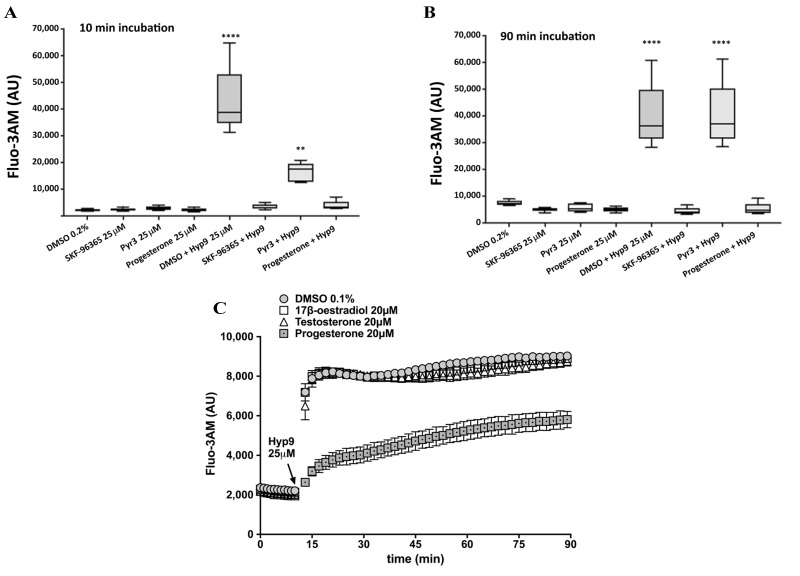Figure 6.
Effect of TRPC3/6 inhibitors or progesterone on Hyp9-induced red blood cell calcium influx.
(A,B) Red blood cells (RBCs) from five healthy volunteers were labelled with a fluorescent calcium probe (Fluo-3AM) and treated with SKF-96365 (a multiple transient receptor potential cation [TRPC] channel inhibitor that blocks TRPC3/6/7), Pyr3 (a selective TRPC3 inhibitor), progesterone or dimethyl sulfoxide (DMSO 0.2%, vehicle control) in the presence or absence of Hyp9 (a selective TRPC6 activator); all drugs at 25 μmol/L. Fluo-3AM fluorescence was recorded at 10 min (A) and 90 min (B) of incubation (37 °C, mild agitation). Box and whisker plots (median + range). ****p<0.0001 DMSO+Hyp9 compared with all other treatments. **p<0.0001 Pyr3+Hyp9 compared with all other treatments except DMSO+Hyp9 (p=0.99); p values obtained by one-way analysis of variance and Tukey’s correction for multiple comparisons. (C) RBCs from a healthy volunteer were labelled with Fluo-3AM and treated with progesterone, 17β-oestradiol, testosterone (all at 20 μmol/L) or DMSO (0.1%, vehicle control). After 15 min incubation (37 °C, mild agitation), Hyp9 was injected and samples were incubated (same conditions) for an additional 75 min. Kinetic curves represent the rates of RBC calcium influx during the incubation period. Error bars represent the standard error of the mean (n=12 replicates). AU: arbitrary units.

